A global crisis was a wake-up call for organizations suddenly in need of a fast and effective way to reach their indefinitely dispersed workforces with vital information. That’s why today's best intranet platforms are addressing this shortcoming by strengthening their overall internal communication capabilities.
Under the extraordinary circumstances brought on by the pandemic, traditional intranets revealed themselves to be sorely lacking. They couldn't effectively broadcast the trusted, valid, up-to-date information that employees need in order to remain safe, secure, and productive. Traditionally, that simply wasn't what they were designed to do.
Going forward, that all has to change.
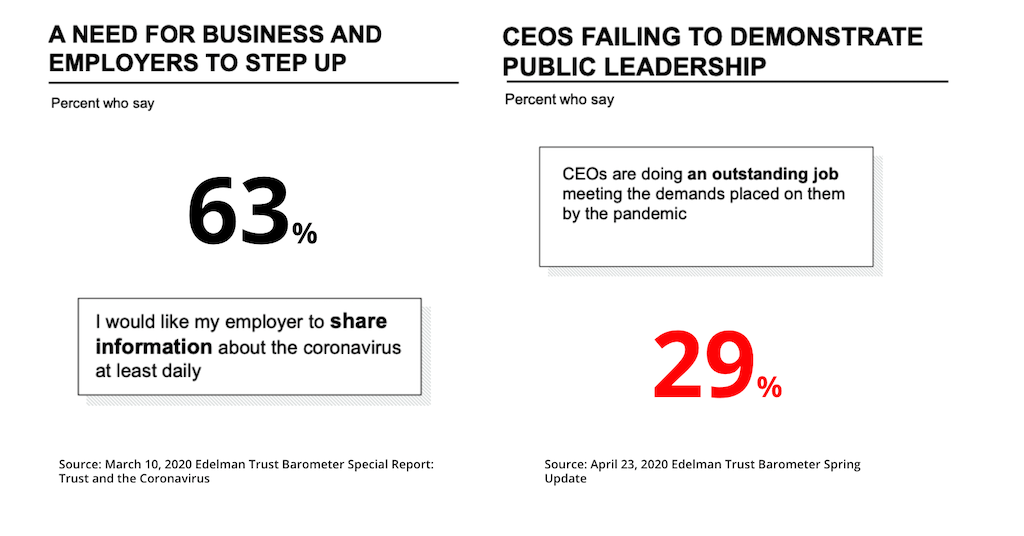
1. Today's best intranet platforms must have the ability to communicate instantly with all employees.
Covid-19 revealed the deficiencies of many companies regarding their ability to immediately and effectively share information with a suddenly dispersed workforce. The result has been a changed focus for corporate intranets.
The need for true company-wide communication, available at a moment’s notice, is now a clear business requirement. In other words, the global pandemic made the need for a truly effective internal communication strategy more evident than ever before.
Organizations that have remained dependent on traditional intranets to share company information have found themselves behind the eight ball. They just weren't able to get critical information to their people in a timely fashion. It was a bad time to finally realize that internal communication was business critical.
If you fail to prepare, prepare to fail.
The logical solution for many companies comes in the form of new mobile communication tools. Ones that operate either within or alongside a corporate intranet and are accessible on the personal devices of a remote workforce.
Such modern, mobile intranets feature real-time communication capabilities such as push notifications. Push makes the immediate reception of important information possible anytime and anywhere. It also boosts employee app engagement by 88%, and 65% of users return to push-enabled apps.
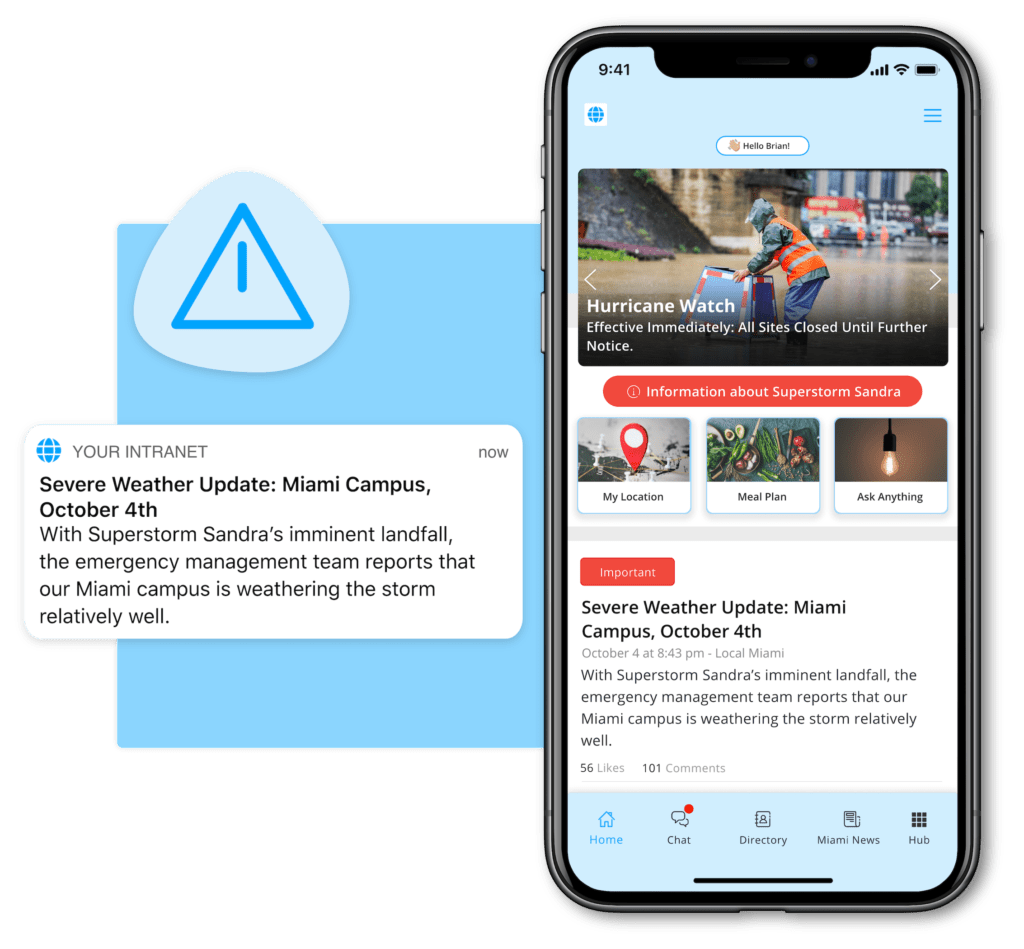
Modern intranets and employee apps are giving internal communications a better way to bring remote employees together. In doing so, they create experiences that build emotional connections between people and their work.
And because today's best intranet platforms are easier and faster to implement than ever before, more companies can turn to them in their efforts to quickly meet ongoing challenges and be better prepared for future crises.
2. Intranet video should play an even greater role in sharing information, building culture, and driving engagement.
Video is playing a leading role as a storytelling channel and a connector of employees. As such, video is increasing its function as an important means of internal communication. It’s easily the most popular way to effectively communicate in our digital age. And video has proven itself as an ideal medium for sharing information in a way that’s more engaging than text.

Videos convey authenticity and foster engagement. This is key in times of crisis. There’s no substitute for being able to see the reassuring expression on a speaker’s face, observe their body language, and hear their tone of voice.
Even before the coronavirus pandemic, more and more organizations were finding ways to embed videos on their intranet. Doing so is recognized as a great way to effectively share a variety of information:
- Recruitment videos
- Onboarding information
- Culture-building messages
- Mission statements
- Explainer videos
- Training sessions
- Direct messages from the CEO
These pieces of video content can include almost anything, from scripted, well-produced stories, to quick and dirty videos recorded remotely and uploaded from an employee’s smartphone.
Videos are:
- Engaging: Employee communications articulated through video have a 3x higher click-through rate than any other type of content.
- Memorable: 80% of users remember the videos they watch online.
- Fast: Videos uploaded to your intranet can be sent instantly to everyone. And they'll have more value than a 1,600-word blog post that probably took way more time to write.

More important than perhaps any other quality, videos are now an expected means of everyday communication. After all, who wants to read the book when they can watch the movie?
3. Simplicity and a consumer-grade user experience are now intranet must-haves.
Often when organizations implement new technology solutions, a lot of training and education is necessary to teach employees how and why they’re being used. And while you can expect some training as necessary, it goes without saying that the less needed, the better. It’s fairly clear that when employees aren’t intimidated by new workplace tools, they're far more likely to use them.
Mitigating complexity is a big reason why more and more companies are being careful to offer digital tools with a simple, consumer-grade user experience. In the case of modern intranets, if their goal is accessibility to all employees, then it stands to reason that all employees need to be comfortable using them.
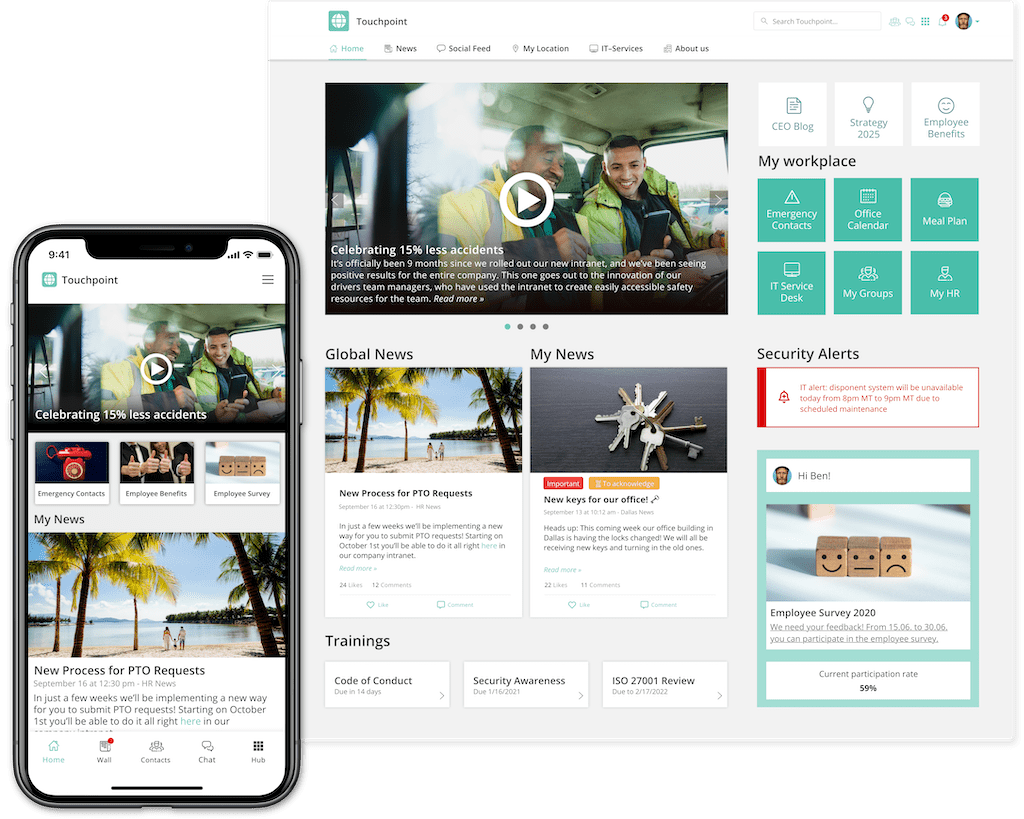
It's therefore a welcome trend that the modern intranet is becoming more consumer-grade. In other words, today's best intranet platforms will be far more focused, user friendly, and attractive than their legacy counterparts. These qualities all increase the likelihood of adoption, as does the “cool factor” of such well-functioning tools. This latter characteristic is one that all employees — but especially millennials and Gen Z — will value and appreciate.
Then there’s the question of how to organize intranet content.
When new intranet products require migrating content from legacy infrastructure, some businesses make the mistake of considering everything on their current system to be of equal value. This leads to the ill-informed conclusion that when building a new intranet, all existing content needs to migrate.
That’s a really bad idea, no matter how advanced the intranet platform you’re using.
That’s why another trend in intranets is the belief that less is more. New intranet implementation is a great opportunity to do some serious spring cleaning. And because searchability is an essential function of intranet usability, clearing out the junk and clutter of an older platform is actually one of the greatest ways to improve usage.

Ultimately though, the trend for workplace tools to provide familiar, consumer-grade experiences is here to stay. Employees want a modern intranet that looks and operates like the technology they use in their personal lives (think Twitter, LinkedIn, Facebook, or Google).
Perhaps the best way for organizations to meet this need is to only consider introducing tools so well designed, useful, and valuable that it's easy to imagine their use outside of the office. After all, that’s where a lot of work is happening these days anyway.
4. Today's best intranet platforms need to create local relevance and global engagement.
With many of today’s global companies dispersed internationally, effective internal communication has needed to satisfy location-specific concerns. This was never more clear than during the Covid-19 crisis. Different company locations faced vastly different challenges. What was happening in the HQ wasn’t necessarily happening on the other side of the world. It became obvious that location-specific information was the best way to address location-specific concerns.
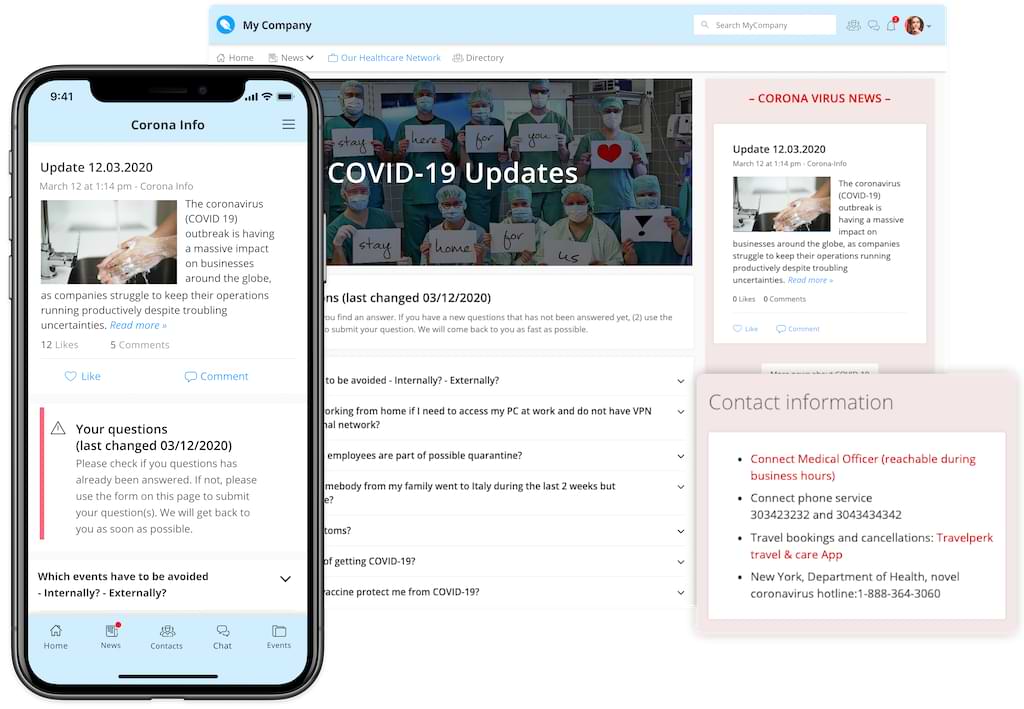
How one Italian company managed the Covid-19 crisis globally.
Located on the front lines of the coronavirus outbreak in northern Italy, the fashion business Max Mara had to immediately and reliably share emergency information with employees in their Italian headquarters. But they also had to update their hundreds of store managers and remote employees around the globe.
Max Mara used their mobile-first intranet to share information from the OMS (The World Health Organization) and the Italian government. The company created a dedicated channel in the global news feed of their employee app. And they included information about health measures such as proper hygienic practices.
Additionally, targeted channels in their mobile intranet allowed them to curate localized, often firsthand information from relevant and trusted sources.
Luckily, times of crisis are relatively rare. But the ability to share targeted information with a global workforce under normal circumstances has obvious business benefits and is a vital element of company-wide employee engagement.
The best intranet platforms are targeted to personas and devices.
Local topics are generally far more important to your employees. The insights of a local plant manager as opposed to a CEO can promote culture, strategy, and a sense of purpose.
Additionally, different employee personas will have different communication needs and preferred channels. This is yet another reason why your intranet should have the ability to distinguish between personas. And it should target information to them in a way that best ensures it will be seen and read.
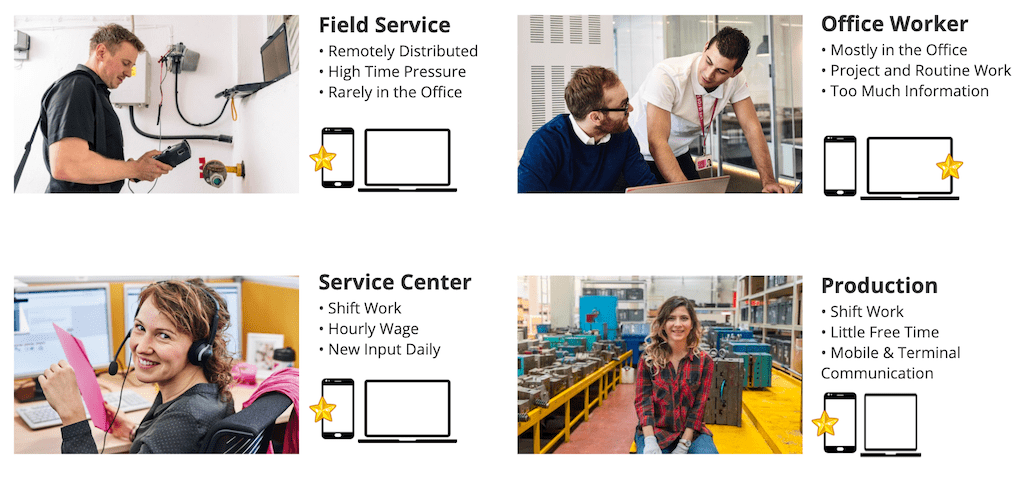
5. Today's best intranet platforms must be an organization's hub of trusted comms and information.
Trust has many benefits. It promotes cooperation and loyalty; it encourages the sharing of information; and it improves individual and organizational performance.
In a trustworthy work environment, communication is more open, people are more willing to help others, and ideas are more likely to be heard. Over time, trust makes companies more creative, innovative, cooperative, and agile.
Conversely, a lack of trust is one of the biggest expenses in organizations. In fact, some experts believe that most of the problems employers think they have — be they leadership issues, sales issues, or engagement issues — all come down to a matter of trust.

The good news is that employee trust in their place of work has traditionally been strong. In fact, for nineteen straight years, beginning with its founding in 2000, the Edelman Trust Barometer, an annual trust and credibility survey, revealed the workplace as the most trusted source of information.
The bad news is that for the first time in two decades, as a result of the coronavirus crisis, this statistic changed. In 2020, Edelman reported that “the pandemic has exposed several areas of deep concern: Half of people believe business is doing poorly, mediocre, or completely failing at putting people before profits; [and] only 43% believe that companies are protecting their employees sufficiently from Covid-19.”
CEOs rank last in perceived performance to meet the demands of the Covid-19 pandemic.
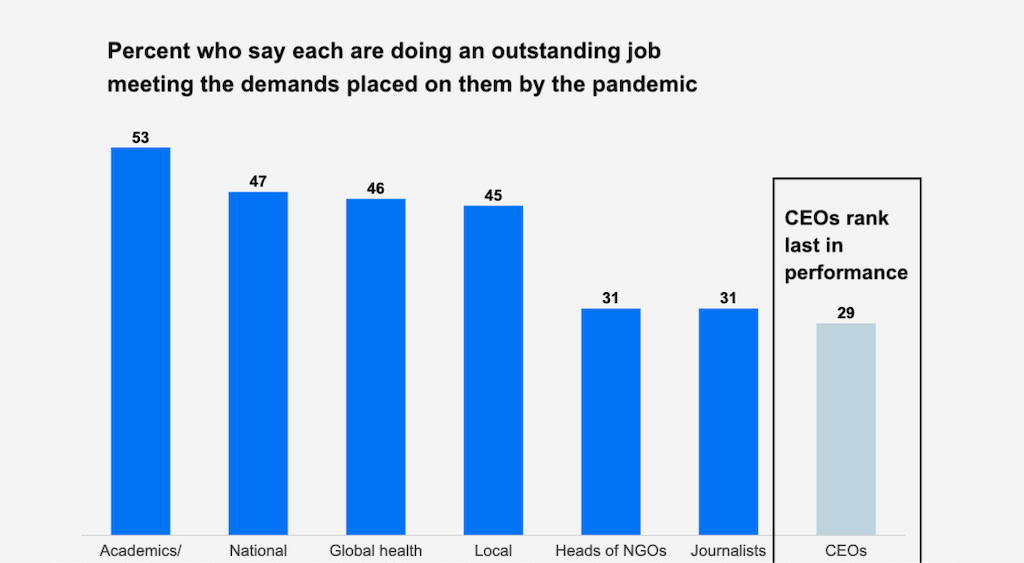
Source: https://www.edelman.com/research/trust-2020-spring-update
It's almost certain that a big part of this problem is that in a post-pandemic work environment, companies have failed to properly assuage the fears and anxieties of their employees. This is one major result of companies being ill prepared to communicate effectively with their people.
On the other hand, organizations with established measures for company-wide comms were better able to weather the crisis. Their methods of communication, employee apps and employee experience intranets, were able to get immediate and vital messages and information to all employees.
Companies with traditional intranets that could only broadcast news and information limited to workers with on-site access were at a loss to communicate once those people were sent home.
User-driven social intranets often amplify misinformation.
Even companies with social intranets struggled to provide a single source of truth. These tools with a user-driven structure often serve to amplify misinformation and can create corporate echo chambers that reinforce fake news.

What became clear is that companies that want to present a unified front in their fight against fear and uncertainty need to provide their employees with a single trusted and transparent source of truth. Unlike communication tools such as Slack and Microsoft Teams, the best intranet platforms provide an unambiguous channel. One to which employees can turn for trusted information.
Such an intranet is more than a nice-to-have, but a necessary tool continuously focused on meeting the crucial leadership responsibility of building and maintaining trust, security, and engagement among employees — wherever they work.




